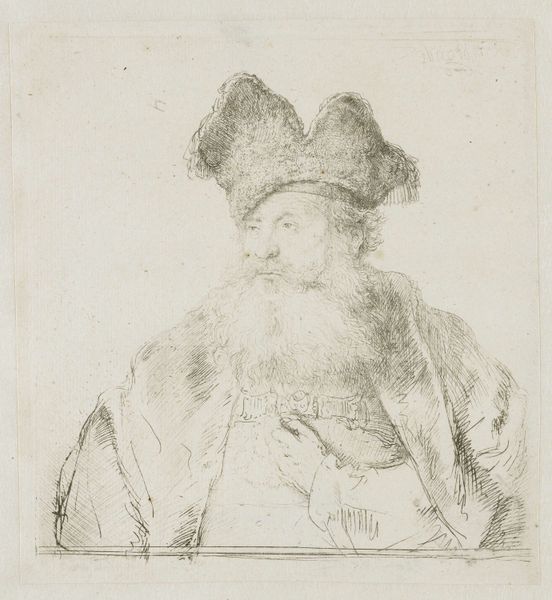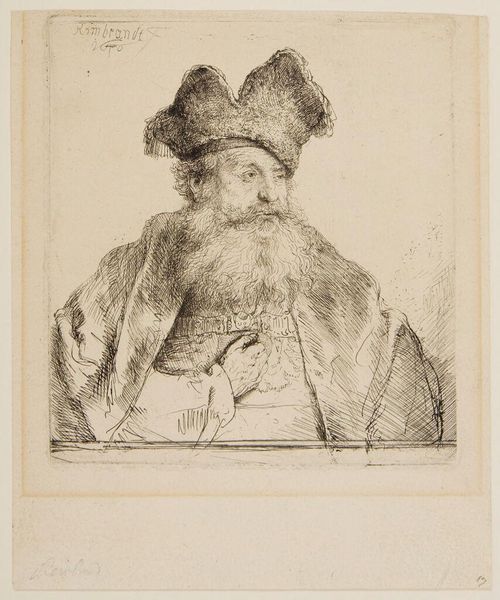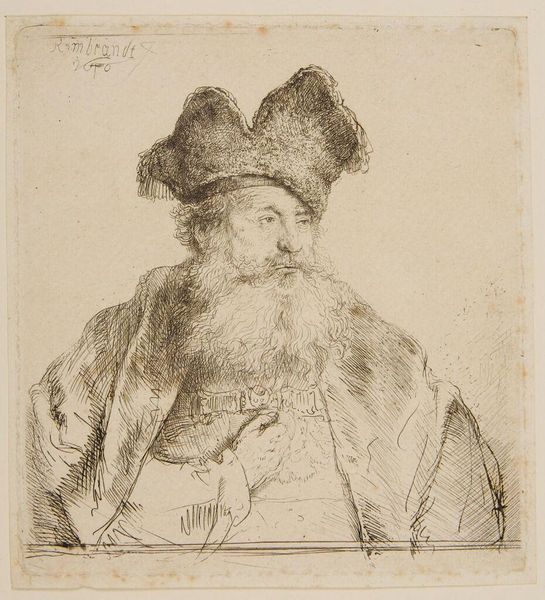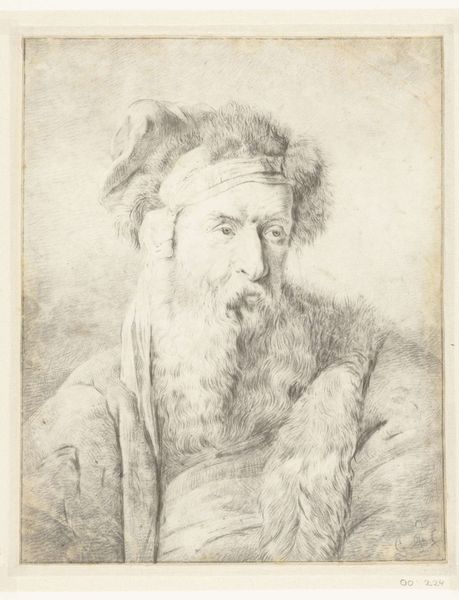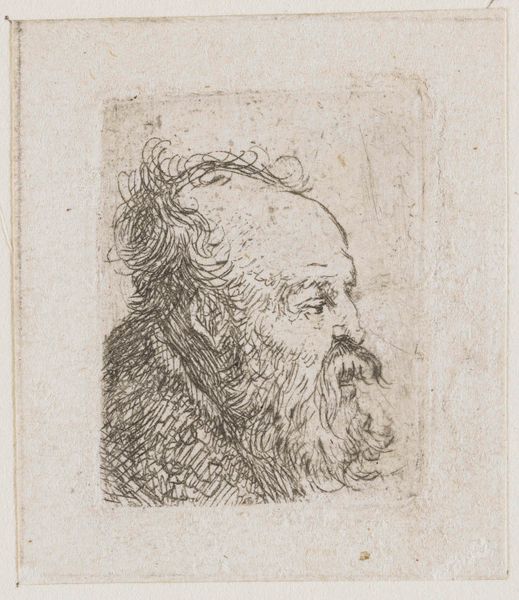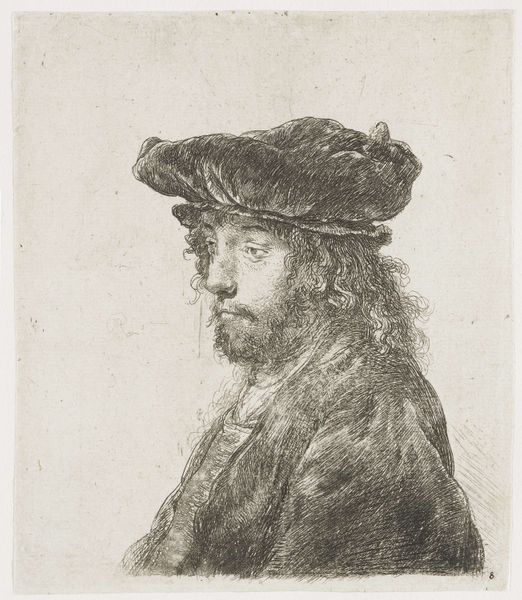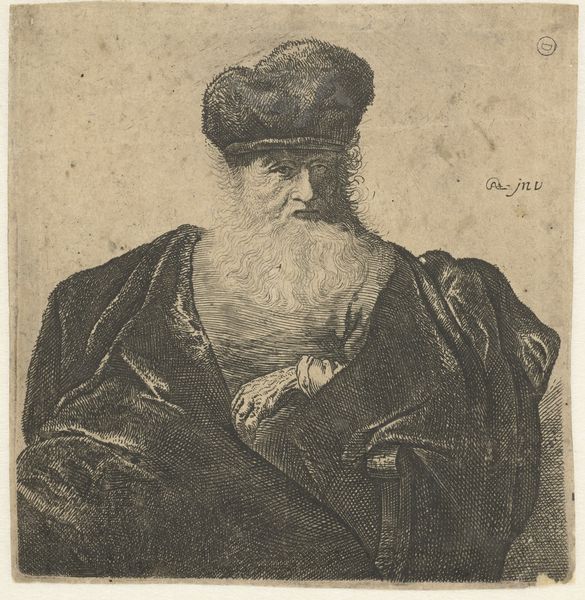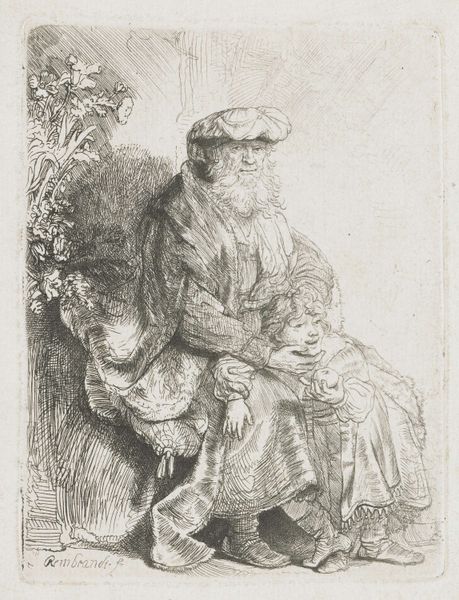
drawing, print, etching
#
portrait
#
pencil drawn
#
drawing
#
baroque
#
dutch-golden-age
# print
#
etching
#
pencil sketch
#
charcoal drawing
#
figuration
#
pencil drawing
#
line
#
portrait drawing
Dimensions: height 148 mm, width 136 mm
Copyright: Rijks Museum: Open Domain
Editor: Right, next up we have "Old Man with a Divided Fur Cap," an etching by Rembrandt van Rijn, created in 1640. The level of detail for an etching is pretty stunning. I'm particularly struck by the textures he creates, especially in the fur cap and beard. What aspects of the work strike you? Curator: The etching speaks volumes about the social and political dynamics of Rembrandt's time. Look closely at the figure's clothing and expression. Consider, too, where it would be seen, if Rembrandt were not as famous as he is. Does it remind you of Dutch genre paintings of the time and, if so, what similarities do you see? Editor: I can see how it evokes the everyday. Maybe in capturing older figures who maybe would otherwise go unseen in art. The face seems worn and dignified at the same time, but still, why? What made portraiture like this "popular"? Curator: The Dutch Golden Age, Rembrandt's time, witnessed the rise of a merchant class with considerable wealth and influence. This class valued individual portraits not just as status symbols but also to commemorate family or mark civic accomplishments. Moreover, it was about national identity in a new country; portraits like these visually constructed social status and asserted civic responsibility. Consider who would have been drawn or printed—and who would have been excluded? Editor: It’s interesting to consider art and portraits as cultural products with explicit societal roles! So it's not only about capturing an individual's likeness, but also reflecting, and reinforcing societal structures and values? I never considered portraiture's contribution in marking civic life and consolidating social classes. Curator: Exactly. Appreciating art through history and society enables us to view it as more than aesthetic achievement, but to interpret the portraiture in terms of nation-building. I’m pleased to have guided your vision toward more comprehensive art analyses.
Comments
No comments
Be the first to comment and join the conversation on the ultimate creative platform.
